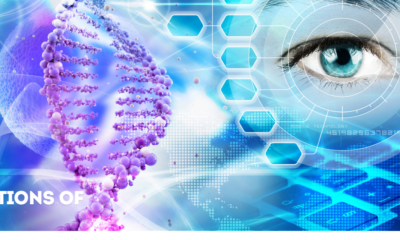Public Health
ADHD in Children and Adults: Management Strategies for Success

Attention Deficit Hyperactivity Disorder (ADHD) is a neurodevelopmental condition that affects millions of children and adults worldwide. Characterized by symptoms such as inattentiveness, hyperactivity, and impulsivity, ADHD can profoundly impact daily life, academic performance, work, relationships, and overall well-being. While ADHD is often associated with childhood, it is a condition that persists into adulthood for many. Consequently, understanding ADHD across different stages of life is crucial for developing effective management strategies. This documentary-style article explores ADHD in children and adults, examining the underlying mechanisms, symptoms, challenges, and, most importantly, management strategies that pave the way for success.
Understanding ADHD
- Defining ADHD
ADHD is a neurodevelopmental disorder that originates in childhood, but its effects often persist into adolescence and adulthood. According to the Diagnostic and Statistical Manual of Mental Disorders (DSM-5), ADHD is classified into three types:
- Predominantly inattentive presentation
- Predominantly hyperactive-impulsive presentation
- Combined presentation
Each of these types displays a different mix of symptoms. For instance, individuals with the inattentive type may struggle with sustaining attention and are prone to making careless mistakes. Those with hyperactive-impulsive presentations may fidget excessively, interrupt others frequently, or struggle with waiting their turn.
Prevalence and Diagnosis
ADHD is one of the most common neurodevelopmental disorders in children, with a prevalence of 5-10% in school-aged children. Although it was traditionally seen as a disorder affecting children, it is now well-established that ADHD often continues into adulthood. Studies suggest that about 50-60% of children diagnosed with ADHD will carry some of the symptoms into adulthood, translating to around 2.5-5% of the adult population worldwide.
Diagnosis involves a combination of clinical interviews, behavioral assessments, and standardized ADHD rating scales. It is crucial to note that the symptoms of ADHD can be mistaken for or overlap with other mental health conditions, such as anxiety, depression, or learning disabilities, making an accurate diagnosis a delicate process.
ADHD in Children
1) Early Childhood Manifestations
ADHD often becomes apparent during early childhood, typically between the ages of 3 and 7. In this age group, symptoms manifest as excessive motor activity, poor attention span, and impulsivity. Children with ADHD may struggle to follow simple instructions, complete tasks, or control their energy levels, which often makes classroom environments challenging.
Parents may first notice the signs of ADHD when their child is unable to sit still during meals, constantly interrupts conversations, or has trouble engaging in quiet play activities. Teachers may notice the child has difficulty following instructions, staying seated, or completing schoolwork.
2) Impact on Education
ADHD can significantly affect a child’s academic journey. Children with ADHD often perform below their academic potential due to their inability to concentrate, follow through on assignments, and manage their time. These children may be labeled as “troublemakers” or “underachievers,” even though their intelligence and cognitive abilities may be well within or above average.
Disruptions caused by ADHD behaviors can also lead to frequent reprimands from teachers, social isolation from peers, and low self-esteem. Over time, these children may develop secondary emotional and behavioral issues, such as anxiety or oppositional defiant disorder (ODD), compounding the challenges they face.
3) Social and Emotional Challenges
ADHD doesn’t just affect academic performance; it also has a profound impact on a child’s social life. Children with ADHD may struggle to form and maintain friendships due to impulsivity, poor listening skills, and difficulty regulating their emotions. They may blurt out inappropriate comments, struggle with turn-taking in games, or act aggressively without realizing the social consequences.
Emotionally, these children are more likely to experience feelings of frustration, rejection, and failure. When they are repeatedly scolded or singled out for their behavior, it can damage their self-esteem and lead to a negative self-image, creating a cycle of academic and social failure.
ADHD in Adults
- The Transition from Childhood to Adulthood
While some individuals with ADHD experience a decrease in hyperactivity as they age, many of the core symptoms, especially inattentiveness and impulsivity, persist into adulthood. The transition from childhood to adulthood is marked by increasing responsibilities, such as managing work, maintaining relationships, and balancing finances, which can be particularly challenging for adults with ADHD.
Unlike children, whose symptoms are often most visible in structured environments like schools, adults with ADHD may struggle in unstructured environments where they are expected to manage their time and tasks independently. This can lead to difficulties in careers, relationships, and day-to-day life management.
- ADHD in the Workplace
ADHD can create significant challenges in the workplace. Adults with ADHD may struggle with organization, time management, completing tasks, and meeting deadlines. They may find it difficult to focus during long meetings or manage projects that require sustained attention over time.
These workplace difficulties can have severe consequences, including underemployment, frequent job changes, and job loss. On the flip side, adults with ADHD often bring creativity, high energy, and problem-solving skills to the workplace. With the right accommodations and strategies, they can thrive in environments that value innovation, flexibility, and teamwork.
- ADHD and Relationships
Interpersonal relationships can also be affected by ADHD. In personal relationships, adults with ADHD may be perceived as inattentive or unreliable by their partners. They may forget important dates, miss appointments, or struggle to maintain household responsibilities, which can lead to tension in romantic relationships or marriages.
In friendships, adults with ADHD may have difficulty keeping in touch or may unintentionally offend others by interrupting or dominating conversations. Over time, these social challenges can lead to feelings of loneliness, frustration, and even depression.
Management Strategies for Success
1) Medical Interventions
Pharmacological treatment is often one of the first lines of defense against ADHD symptoms. Stimulant medications such as methylphenidate (Ritalin) and amphetamine-based drugs (Adderall) are commonly prescribed to children and adults. These medications work by increasing dopamine levels in the brain, improving focus, and reducing impulsivity and hyperactivity.
For those who do not respond well to stimulants, non-stimulant medications such as atomoxetine (Strattera) and guanfacine (Intuniv) may be considered. These medications work differently by affecting norepinephrine levels, but they also help to improve attention and impulse control.
Medications are not a one-size-fits-all solution and often require careful monitoring and adjustments. Moreover, while medications can alleviate core symptoms, they are most effective when combined with other therapeutic interventions.
2) Behavioral Therapy and Psychosocial Interventions
Cognitive Behavioral Therapy (CBT) is a widely used approach to managing ADHD symptoms. CBT helps individuals recognize negative thought patterns and replace them with more positive and productive behaviors. For children, behavioral interventions often focus on creating structure through rewards and consequences to encourage positive behavior. Parents and teachers may also participate in behavioral training to better support the child.
In adults, CBT can help individuals manage procrastination, disorganization, and emotional dysregulation. Learning coping strategies for emotional control, time management, and prioritization can significantly improve functioning.
3) Educational and Workplace Accommodations
For children with ADHD, educational accommodations can make a world of difference. Schools may offer Individualized Education Plans (IEPs) or 504 Plans, which provide tailored support to students. These might include extended time on tests, breaks during class, or modified seating arrangements to minimize distractions.
Adults in the workplace may benefit from accommodations such as flexible schedules, the use of organizational tools (e.g., planners or reminder apps), or frequent breaks during long projects. Employers who are aware of an employee’s ADHD diagnosis may also offer more structured feedback and task management to help the individual stay on track.
4) Lifestyle Adjustments and Self-Management
Lifestyle adjustments are crucial for individuals with ADHD. For both children and adults, regular physical exercise has been shown to help reduce ADHD symptoms by increasing dopamine and norepinephrine levels in the brain. Exercise, particularly aerobic activities like running or swimming, can improve focus, reduce restlessness, and enhance mood.
Dietary interventions, although not a substitute for medication or therapy, may also have a role in managing ADHD. Studies suggest that reducing sugar intake, avoiding food additives, and incorporating omega-3 fatty acids into the diet can have a positive impact on behavior and cognitive function.
Self-management strategies are equally important for adults with ADHD. Utilizing organizational tools, setting reminders, and breaking tasks into smaller, manageable steps can help reduce overwhelm. Additionally, practicing mindfulness techniques can improve emotional regulation and reduce impulsivity by increasing awareness of one’s thoughts and feelings in the moment.
5) Social Support and Communication
Support networks play an essential role in ADHD management. For children, supportive teachers, understanding peers, and involved parents can make a significant difference in mitigating the social and academic challenges of ADHD. Parents may benefit from joining support groups where they can share experiences and gain insights into new strategies for helping their child succeed.
Adults with ADHD may find support through ADHD coaches or therapists who specialize in helping individuals develop personalized strategies for daily life management. Building a strong network of friends, family, and colleagues who understand and support their needs is also critical.
Open communication is key to reducing misunderstandings and managing expectations in relationships. For instance, couples therapy or relationship coaching may be beneficial for partners where one or both individuals have ADHD. Learning how to express needs, manage conflict, and establish boundaries can foster healthier relationships.
Long-Term Success and Outlook
- Embracing ADHD as Part of Identity
Although ADHD can present significant challenges, many individuals with ADHD also possess unique strengths, including creativity, spontaneity, and an ability to think outside the box. Accepting ADHD as a part of one’s identity, rather than a defect, is essential for building self-esteem and developing a positive self-concept.
Famous individuals like Olympic swimmer Michael Phelps, entrepreneur Richard Branson, and actor Emma Watson have spoken openly about their experiences with ADHD, serving as role models for others. These success stories demonstrate that ADHD does not have to be a barrier to achieving one’s goals.
With continued research, the understanding of ADHD is likely to deepen, leading to more effective treatments and interventions. Advances in brain imaging and genetics may reveal more about the underlying causes of ADHD, opening the door for new pharmacological and therapeutic options.
The societal understanding of ADHD is also evolving. Public awareness campaigns, media coverage, and advocacy groups are working to destigmatize ADHD and promote acceptance and accommodation. In workplaces, schools, and homes, this shift in perspective can foster environments where individuals with ADHD are not only accepted but also empowered to thrive.
Conclusion
ADHD is a complex and multifaceted condition that affects individuals across all stages of life. Children and adults with ADHD face unique challenges, from academic struggles and social difficulties to workplace issues and relationship strain. However, with proper diagnosis, targeted treatment, and supportive strategies, individuals with ADHD can lead successful and fulfilling lives. Whether through medical intervention, behavioral therapy, lifestyle adjustments, or strong social support, the path to success with ADHD is multifaceted, but achievable. Through a combination of understanding, acceptance, and effective management, children and adults with ADHD can harness their strengths and overcome the hurdles they face, turning their potential into reality.
-

 Press Release7 days ago
Press Release7 days agoIn2space Launches Campaign to Make Space Travel Accessible for All
-

 Press Release3 days ago
Press Release3 days agoNura Labs Files Revolutionary Patent: AI-Powered Wallet Solves the $180 Billion Crypto Staking Complexity Crisis
-

 Press Release17 hours ago
Press Release17 hours agoGlobal Compound Feeds and Additives Industry Report: Market Expansion and Competitive Insights to 2035
-

 Technology17 hours ago
Technology17 hours agoWhat to Know Before Switching Cell Phone Network Services in 2025

































